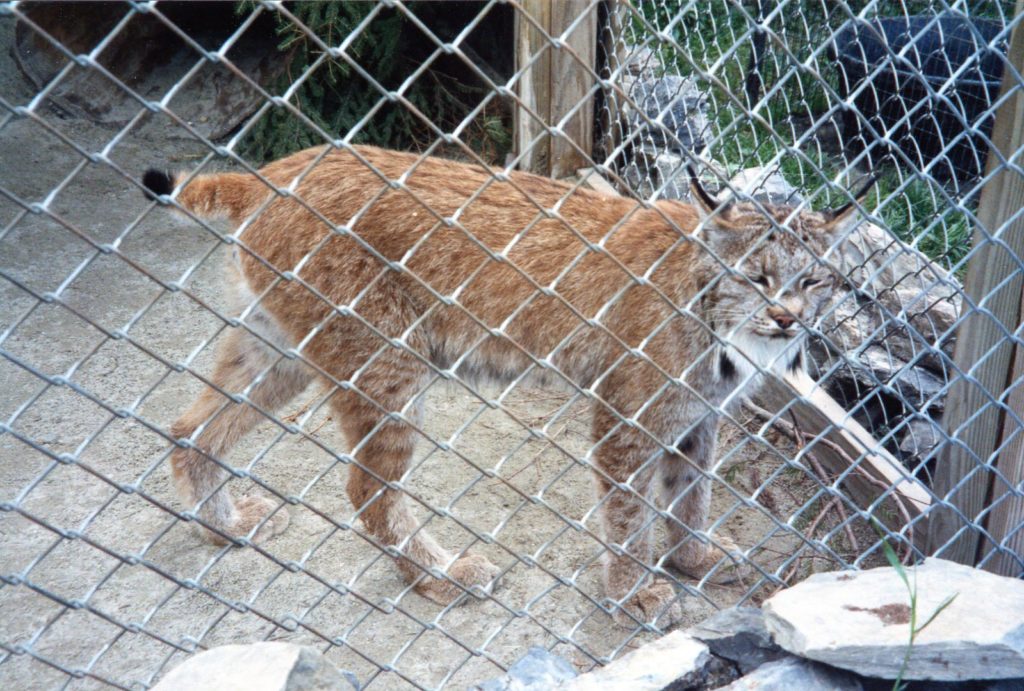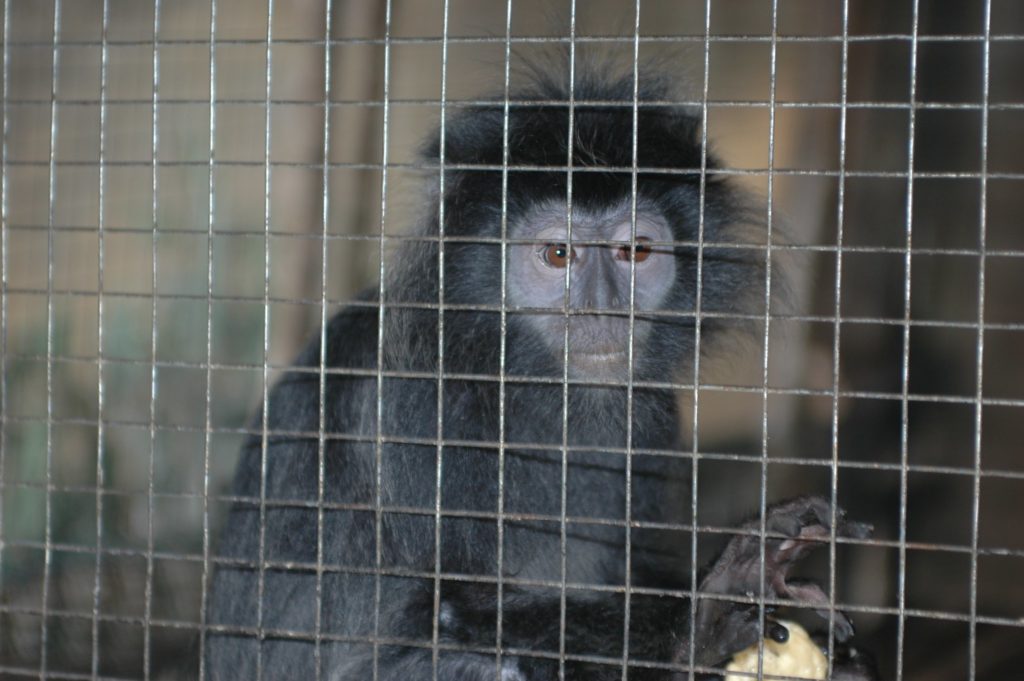Most animal advocates are fundamentally against zoos. Some are willing to accept zoos that exist for scientific purposes or carry out projects for the protection and conservation of species, as long as all animal welfare conditions are met a well. Unfortunately, most modern zoos declared “scientific” do not really qualify as such.

A caged lynx at Flag Acres Zoo. Image credit Kim Bartlett – Animal People, Inc.
In the European Union there are more than 1,000 zoos, each containing numerous animals, both native to the area and exotic. Most of the physical and mental needs of these animals are not met. In 1998, the European Commission published a draft regulation to determine the minimum standards for keeping animals in zoos. These proposed regulations still have not been accepted or formalized.
The sad daily routine of zoos remains largely unchanged. Instead of doing what they might do in the wild, such as walking several kilometers a day in search of food, playing, hunting, socializing and communicating with other animals, animals are forced to yearn in their barren and undersized cages. Cells are often incorrectly or insufficiently equipped and do not meet the needs of animals. For example, in order to feel secure and fulfilled, some animals need pools with water and silt, trees to climb, or the ability to hide. Additionally, the process of finding and eating their natural diet is a huge component of a wild animals’ life, which in some species takes up to 15 hours a day. Conditions in zoos that meet animals’ behavioral needs are a rarity.

A monkey looks out from a zoo cage. Image credit Kim Bartlett – Animal People, Inc.
Enclosures are often so close to each other that, contrary to their nature, animals are forced to endure the smell, sounds, or simply the presence of their natural enemy or victim, including massive numbers of noisy humans. Some animals try to run away in a panic, while others may fall into prolonged depression. Often animals are housed without taking into account their social structure. Animals that require social groups are kept separately, and loners may be forced to endure the constant presence of others.
Almost no attention is paid to animals’ need for privacy and rest. For a wild animal to be constantly in front of visitors, to constantly feel their eyes on them, is torture and can be extremely stressful.

A grizzly bear at The Bronx Zoo. Image credit Kim Bartlett – Animal People, Inc.
Animals often suffer from the fact that zoos conduct experiments with the aim of “studying” them. They are also sold or borrowed to other zoos, for example, for breeding. If we consider that the choice of a partner is of no small importance for any animal species, it becomes clear that the so-called “successes” of breeding, which are readily talked about at any zoo, are just a manipulation of the animal’s instincts. Few people talk about what happens to newborns later. On one hand, their chance of survival is often small. On the other hand, especially when it comes to social and highly intelligent animals, females, exhausted by life in captivity, often reject their young or try to destroy them. There are many known cases of such behavior in elephants and primates, for example.
All this frequently leads to a severe overload of the nervous system of animals. Studies have shown that life in a zoo can and often does drive animals into insanity.
Like circuses, zoos are a sign of their time, and the time where we think keeping animals in cages is entertaining or appropriate should be coming to an end. Zoos should be replaced by safaris, wildlife refuges, and beautifully shot films and photographs depicting animals in their natural habitat. You can also educate others about wildlife and a love for nature in your hometown. There are many ways to appreciate and learn about animals without inflicting the suffering they experience in zoos.
Featured image: a gibbon hangs on the inside of a zoo enclosure. Image credit Kim Bartlett – Animal People, Inc.





